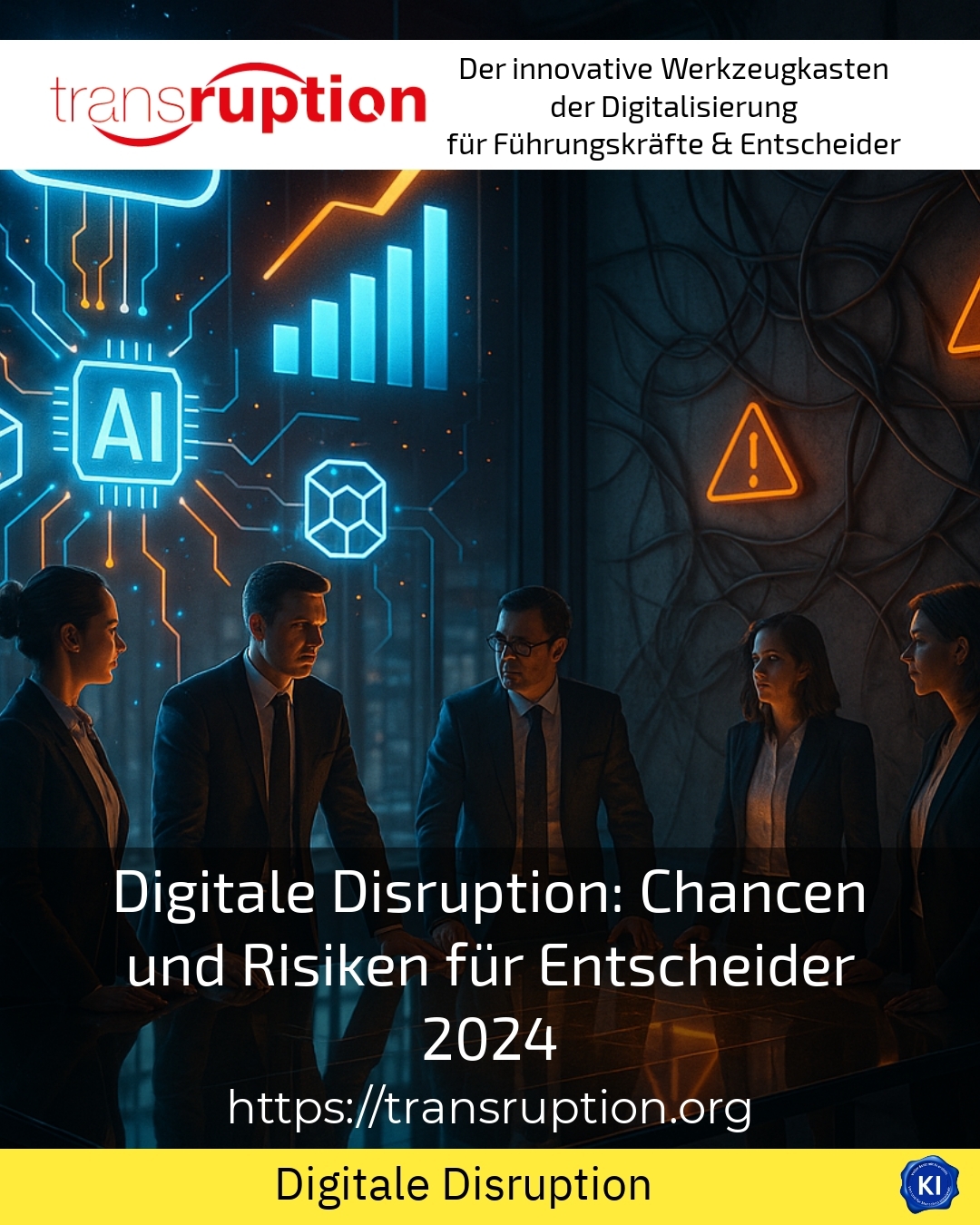Today, digital disruption is shaping the strategies and decisions of managers in almost all industries. Companies are faced with the exciting challenge of successfully asserting themselves in an environment of rapid technological change. Digital disruption opens up opportunities to reshape business models, but at the same time harbours risks that smart decision-makers need to be aware of and manage.
Digital disruption: a turning point for managers
Digital disruption means that technological innovations are fundamentally changing or replacing established products, services and entire industries. Decision-makers today are forced to continuously scrutinise and adapt their strategies. Streaming technology, for example, is leading to a rethink not only in the entertainment industry, but also in education and publishing. Platforms such as Netflix are prompting traditional media companies to rethink their business models and develop their own digital offerings.
Digital disruption is also showing enormous momentum in the mobility sector: Uber has challenged the traditional taxi industry with a platform that connects drivers and customers directly. This example illustrates how digital innovations can become a competitive advantage by not only serving new customer expectations but also utilising resources more efficiently. At the same time, decision-makers must ensure that their own corporate culture is agile enough to react to such changes and not fall behind.
The shift towards e-commerce is causing further upheaval in the retail sector. Amazon, a pioneer with an omnichannel business model, has replaced traditional bookshops with a digital shopping and delivery experience. Such examples show that digital disruption has many facets and that companies must clearly define their role as innovators or digital companions in order to benefit economically from the development.
Opportunities of digital disruption for decision-makers
Digital disruption offers companies and their managers numerous opportunities to optimise existing products and create new business models. For example, digital platforms can efficiently pool resources: Airbnb makes it possible to rent out vacant flats and rooms without owning property. This not only saves costs, but also provides flexibility for everyone involved.
Another opportunity lies in the more direct customer approach through digital channels. Communication is becoming more interactive and individualised, as exemplified by Slack in the area of corporate communication. This enables managers to recognise and respond to customer needs more quickly. The development of new technologies such as artificial intelligence and big data also offers the potential to tailor products and services precisely to target groups.
BEST PRACTICE at the customer (name hidden due to NDA contract) A client from the financial sector used digital analyses and automation to adapt its range of services. Working with the transruptions coaching consultancy helped them to develop digital business models and respond to customer requests in an agile way. This led to improved customer satisfaction and sustainable growth.
How risks from digital disruption can be managed
In addition to the opportunities, the risks of digital disruption should not be underestimated. A lack of transformation can lead to a loss of market share, as the failed examples of traditional companies such as Kodak show. Despite early technical innovations in the field of digital photography, Kodak found it difficult to change because the company recognised the market too late and did not realign itself in time.
Change is often associated with uncertainty. Decision-makers should therefore critically review their own business model and integrate innovations at an early stage. This includes creating open communication structures and a culture that encourages experimentation and rapid learning. In sectors such as retail or insurance, where digital competitors are emerging with flexible models, it is essential to carefully monitor disruptive developments and react quickly.
BEST PRACTICE at the customer (name hidden due to NDA contract) A medium-sized company in the automotive supplier sector supported its digital reorganisation with transruptions coaching. Existing products were expanded and processes digitalised with a view to digital platforms. This not only helped to mitigate market losses due to disruptive new technologies, but also to strengthen internal structures for future challenges.
Digital disruption as a companion to successful projects
Transruption coaching is designed to support companies that want to manage their digital disruption projects professionally. This includes analysing the status quo and developing tailor-made strategies. Decision-makers benefit from methodological expertise that helps them to recognise innovation potential, weigh up risks and use resources efficiently.
A key aspect is supporting cultural change so that teams remain motivated and can react flexibly to new requirements. Practical examples show that this support can accelerate the realisation of digital initiatives and secure them in the long term.
The constant change makes it clear that those who actively shape digital change will gain a competitive advantage and sustainably increase their innovative strength. Digital disruption therefore requires not only adaptation, but also proactively shaping the future.
My analysis
Digital disruption presents decision-makers with a complex field of challenges and opportunities. Companies that recognise changes early on and develop their business models digitally can benefit from this. The examples from a wide range of industries show how innovations are breaking up existing market structures and opening up new potential.
Managers would do well to keep a close eye on digital trends and reduce uncertainty by providing targeted support for projects. Disruption coaching offers methodical impetus and guidance to successfully navigate the path through digital disruption. In this way, disruptive change becomes an opportunity to promote innovation and secure competitiveness.
Further links from the text above:
Digital disruption - IT-P
Digital Disruption - OMR
Digital disruption and megatrends - Maximum Digital
7 successful examples of disruptive innovations - AhaSlides
Digital disruption: opportunities and risks - Sauldie
For more information and if you have any questions, please contact Contact us or read more blog posts on the topic TRANSRUPTION here.
















